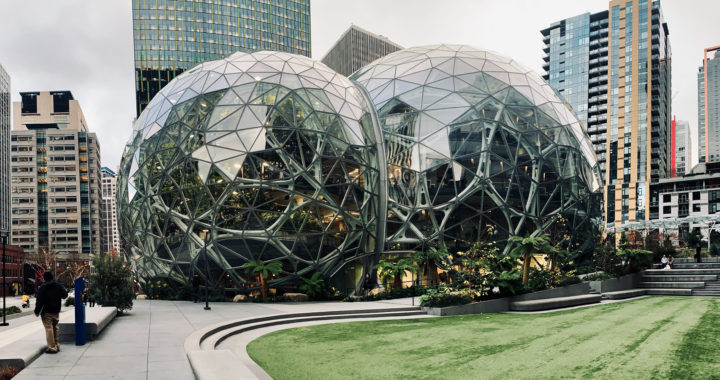Amazon is the largest online retailer and one of the most recognizable brands in the world. However, it is not just an e-commerce website or an online storefront selling a wide range of products under different product categories. It is also not an online bookstore.
Note that Amazon is a full-pledged multinational technology company with an expansive business interest in different industries, sectors, and markets. It is one of the largest and most innovative tech companies both in the United States and the rest of the world.
What Exactly Is Amazon? What Does It Do? What Are Its Specific Businesses or Products and Subsidiaries and Business Interests?
Jeff Bezos founded the company in 1994 in anticipation of the incoming internet business boom. He initially chose the name “Cadabra, Inc.” but changed it immediately to “Amazon.com, Inc.” His vision was to make his startup the biggest bookstore in the world.
The company soon become a leading internet-based enterprise and a specific digital retailer that sells almost anything one can imagine: from clothes and personal care products, toys and other items for children and parents, to furniture and household items and kitchen appliances, as well as consumer electronic devices and even digital products.
But its online storefront accessible through the main Amazon.com website is a mere part of its vast business empire. The company has expanded its business through a series of acquisitions and the pursuit of different ventures.
Amazon is now a conglomerate or a multi-industry company with products and services related to e-commerce, cloud computing, artificial intelligence, consumer electronics, media and entertainment, publishing, advertising, telecommunications, health, automobile, physical retail stores, consumer goods, and education industries, among others.
To understand further the business of Amazon and what it exactly does, take note of the following industries and markets and the respective product trademarks or brands and more specific subsidiaries under each:
1. Electronic Commerce: The Amazon.com website is the flagship e-commerce platform of the company. The company acquired online storefronts in key regional markets such as Souq.com in the Middle East and Junglee and later rebranded them as part of the regional versions of Amazon.com.
The company also acquired and continues to operate American online shoe and clothing retailer Zappos.com and the online fashion apparel and accessories shop Shopbop.
2. Physical Retail Stores: Its entry into the traditional big-box retail market was marked by its acquisitions of the American supermarket chain Whole Foods Market in 2017. It also operates the grocery delivery service provider under the Amazon Fresh brand and other physical Amazon stores in selected and limited markets.
3. Media, Entertainment, and Publishing: The company can also be considered a media empire. It produces original television shows and films for its Amazon Prime streaming services and under the Amazon Studios while also owning Metro-Goldwyn-Mayer Studios after its acquisition in 2021.
It also owns publishing houses such as Audible.com, Brilliance Audio, and CreateSpace, as well as the IMDB website and operates content distribution platforms such as the main Amazon.com website, the Amazon Appstore, the Kindle Store, Amazon Prime, ComiXology, Amazon Music, and Amazon Digital Software & Video Games.
4. Cloud Computing Services: One of the largest subsidiaries of the company, as well as one of its main revenue generators is the Amazon Web Services or AWS. This company is a provider of on-demand cloud computing platforms for business enterprises such as Netflix and non-business organizations such as government agencies.
There are specific products and brands under AWS. These include relational database service Aurora, orchestration service Elastic beanstalk, and data warehouse product Redshift, among others. Note that the company also has a specific cloud storage service for individual end-users under the Amazon Drive brand.
5. Software and Consumer Electronics: Both the Prime and Music apps, as well as the Alexa virtual assistant technology, demonstrate the involvement of the company in the software development business.
It also has dedicated brands and subsidiaries for hardware or consumer electronic products such as the smart speaker brand Echo, the series of electronic readers under the Kindle brand, the Fire brand of tablet computers, and the dedicated research and development and hardware company called Lab126.
6. Telecommunications and Related Services: The company has also begun venturing into the telecommunications industry and specific wireless communication market with the launch of its Kuiper Systems subsidiary in 2019.
Similar to the StarLink broadband internet service of SpaceX, Kuiper deploys broadband satellite internet constellation using low Earth orbit or LEO satellites to provide broadband internet connectivity.
7. Logistics and Transportation: Vertical integration is a critical element of the business strategy of Amazon. Furthermore, note that the business its flagship website rests on inventory management and transportation. To improve its operations, the company has built specific logistics and transportation capabilities.
For example, it established the Beijing Century Joyo Courier Services. Amazon Maritime holds a license to operate a non-vessel-owning common carrier for managing its shipments between the United States and China. It also owns and operates the cargo airliner Prime Air, the logistics management company Amazon Logistics, and the app-based shipment management service Amazon Flex.





